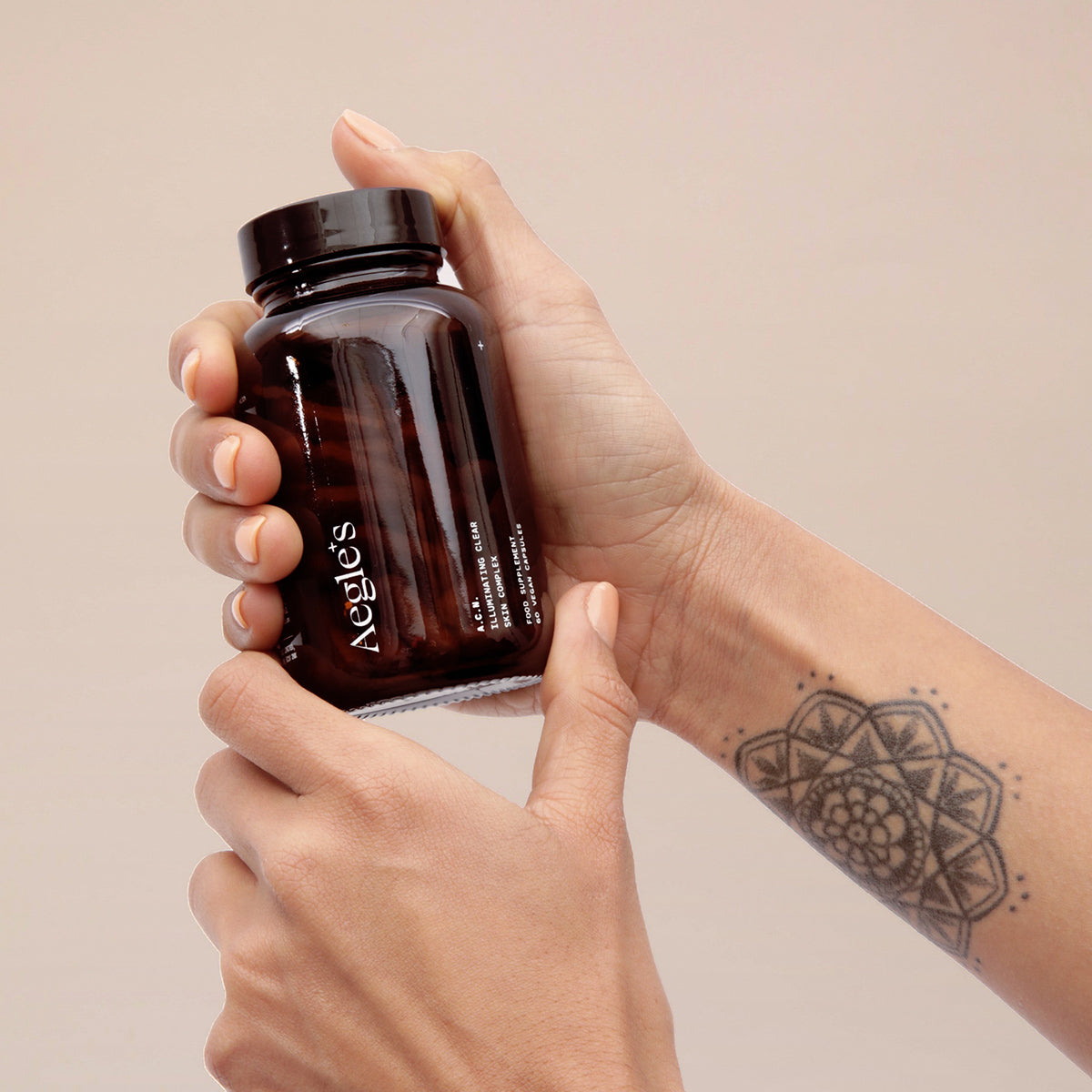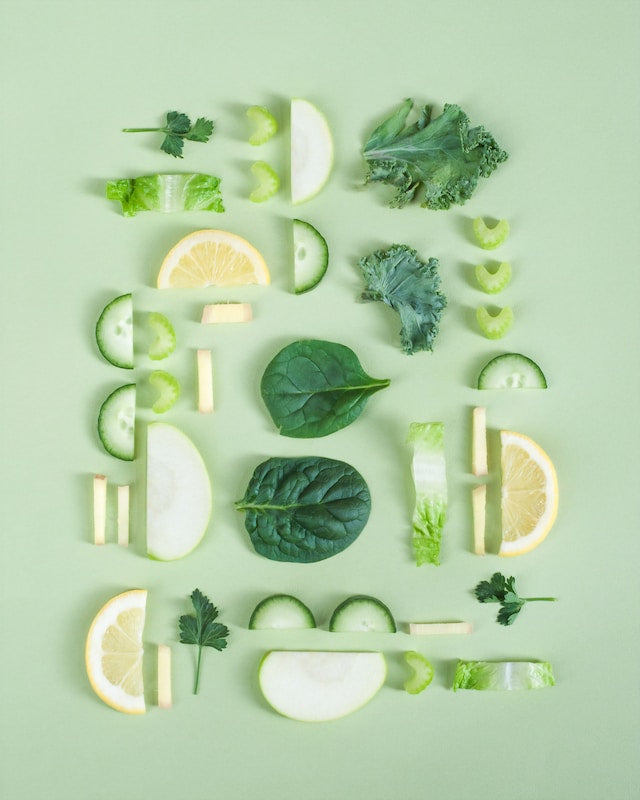Unlike traditional acne, which is caused by bacteria, fungal acne is caused by a type of yeast called Malassezia, which is normally present on the skin but can overgrow under certain conditions, such as excess oil or sweat. Fungal acne typically appears as small, red bumps that are often itchy, and it can occur on the forehead, chest, back, and shoulders.
Fungal acne does not respond to traditional acne treatments because its root cause is different. Treatment requires addressing the fungal overgrowth both internally and externally.
Symptoms of fungal acne
The symptoms of fungal acne are similar to bacterial acne, but there are some key differences to look out for.
Fungal acne usually appears as small, often itchy, and inflamed bumps that are located on the upper body and arms, forehead and temples. All of the bumps typically look the same in size and shape, and appear in clusters. Unlike bacterial acne, fungal acne is not caused by clogged pores, which means no blackheads or whiteheads.
The fungal acne may be accompanied by dandruff or seborrhoeic dermatitis. It’s also possible to have both fungal acne and bacterial acne at the same time, and in the same location on the body.
In addition, fungal acne tends to worsen in hot and humid environments, and doesn’t respond to the use of antibiotics or antibacterials. In fact the use of antibiotics may make even fungal acne worse.
Causes of fungal acne
Factors that alter the balance of microbes in the skin’s microbiome can trigger fungal acne by promoting an overgrowth of Malassezia yeast. This same yeast is also responsible for conditions like dandruff, seborrheic dermatitis, atopic eczema, and psoriasis.
In healthy skin, yeast is a natural part of the skin’s microbiome and is usually kept in check by the body’s immune system. However, in certain cases, the yeast can multiply and lead to fungal acne.
Factors that can trigger an overgrowth of yeast on the skin include:
- Use of immunosuppressants or antibiotics
- Hormonal changes
- Sweat and humidity after exercise
- The use of heavy, occlusive skincare products
- Malnutrition
Diagnosing fungal acne
Because both bacterial and fungal acne can cause pimples, it can be difficult to be absolutely sure of the type of acne that you have. A dermatologist can do a test for fungal acne by taking a skin scraping and testing it for the malassezia yeast.
Treatment of fungal acne
Fortunately, fungal acne is easy to clear by rebalancing the skin’s microbiome and using antifungals and acne treatments.
Just like most skin conditions, there is the option of pharmaceutical or natural treatments, or a combination of both.
Pharmaceutical treatment for fungal acne typically involves the use of antifungal medications such as ketoconazole or fluconazole. These medications can be taken orally or applied topically to the affected area. In some cases, a combination of oral and topical medications may be needed to treat the infection.
The natural treatment of fungal acne involves treating the skin condition internally and externally. Your natural therapist will work with correcting any imbalances in and on the body that may have led to the yeast overgrowth, along with recommending natural topical treatments such as tea tree and clove oils, or raw honey.
In addition to both pharmaceutical and natural treatments, it’s also important to practice good hygiene to halt the growth of yeast on the skin. This includes showering regularly, wearing loose-fitting clothing, and avoiding excessive sweating.
And of course, with whichever treatment method you choose, it’s always beneficial for the healthy microbiome of the body and the skin to take a good quality probiotic, and to add fermented foods into your diet.
Skin care products to avoid
When treating and preventing fungal acne, it’s essential to avoid skincare products that can clog pores and encourage yeast growth, as well as those that disrupt the skin’s natural microbiome.
Additionally, harsh exfoliants should be avoided, as they can inflame and irritate pimples, potentially spreading the fungus and worsening the acne (and, on that note, try to avoid itching too!).
It’s also crucial to steer clear of products containing oils or fatty acids. The yeast responsible for fungal acne thrives on fats, so it’s important to avoid these ingredients in your skincare routine.
For the best skincare options, consult with a natural therapist or dermatologist, or choose products specifically formulated for treating skin fungus.
Preventing Fungal Acne
Preventing fungal acne involves creating an environment that discourages yeast growth. Here are some steps you can take:
- Keep Your Skin Clean: Good hygiene is essential. Wash your face with a gentle cleanser twice a day, especially after sweating or exercising, to help prevent fungal acne.
- Avoid Oily or Heavy Products: Fungal acne thrives in warm, humid environments, so it’s important to avoid using heavy or oily skincare products. Opt for non-comedogenic products that won’t clog pores and steer clear of ingredients like coconut oil, cocoa butter, and lanolin, which can worsen fungal acne.
- Use Antifungal Treatments: If you’re prone to fungal acne, consider incorporating antifungal treatments into your skincare routine. Products containing ingredients like ketoconazole, tea tree oil, or sulfur can be effective. For example, a body wash with tea tree oil is a great option.
- Avoid Tight Clothing in Hot, Humid Environments: Tight clothing can trap moisture and heat, creating the perfect conditions for fungal acne to develop. Choose loose-fitting clothing made from breathable fabrics such as cotton or linen, and avoid wearing tight hats or helmets for long periods.
- Follow a Healthy Diet: Yeast thrives on sugar, so a diet low in sugars and simple carbohydrates can help prevent fungal acne. This type of diet is also beneficial for preventing the more common bacterial acne.
Conclusion
In conclusion, fungal acne is a less common type of acne that can be easily diagnosed and treated by restoring the skin's natural microbiome and addressing the underlying causes of yeast overgrowth.
Start your journey to heal your skin now.

Start your journey to heal your skin now.
- Contains ingredients clinically proven to improve blemishes and skin radiance.
- Formulated by one of the world's leading skin practitioners.
- The only supplement that works for the three main causes of blemishes, blackheads and oily skin.
Discover more articles
- Choosing a selection results in a full page refresh.






